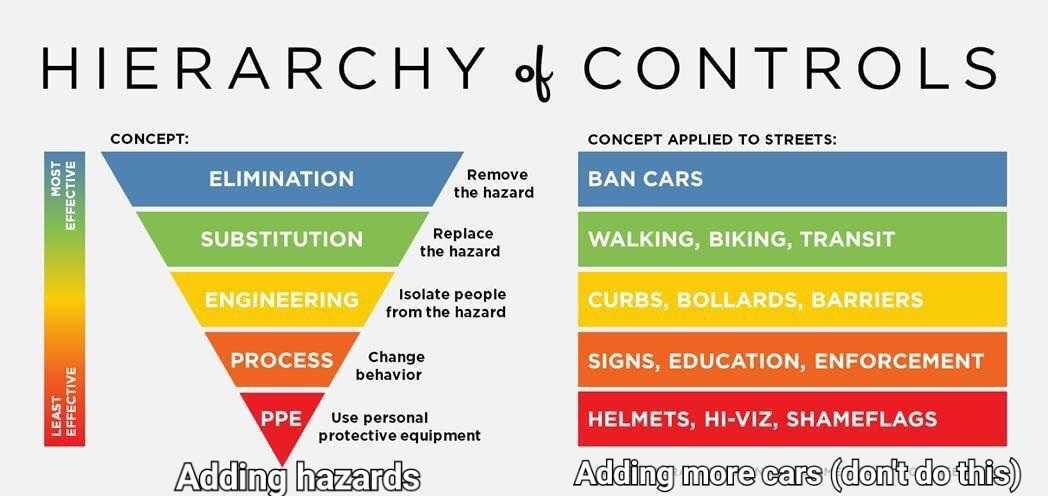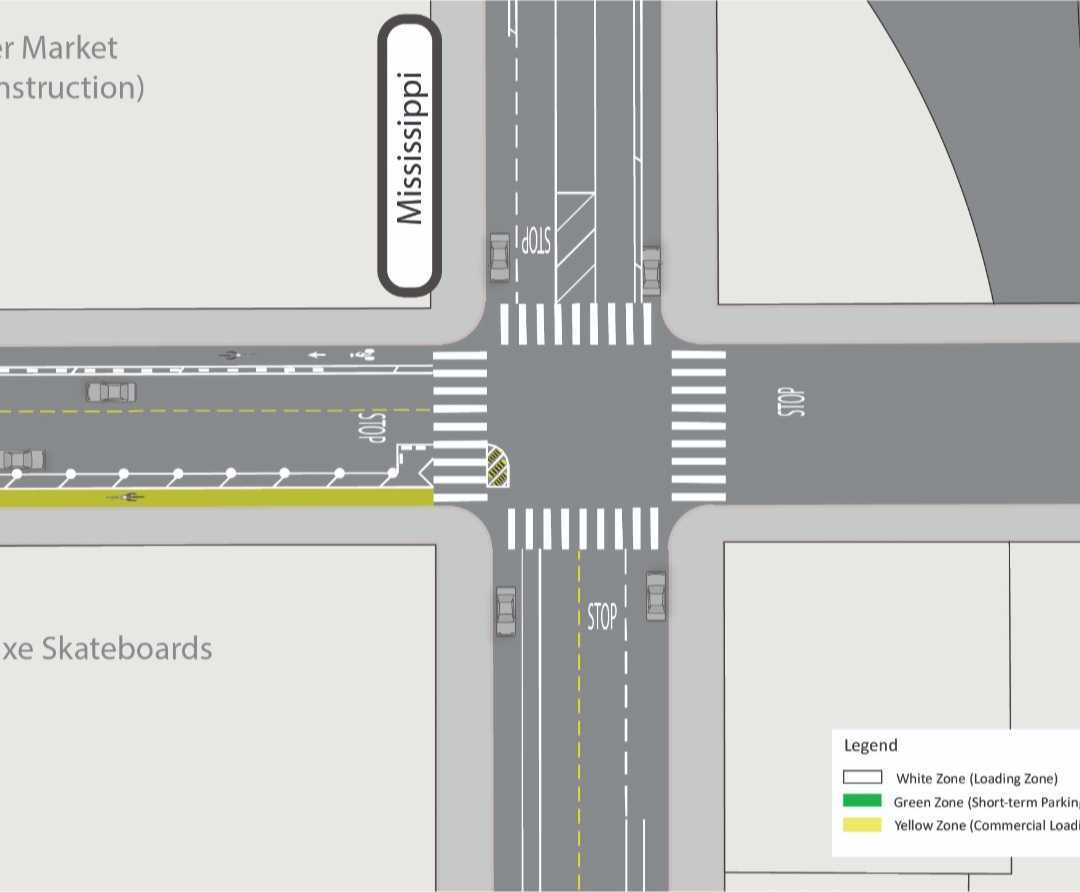Waymo Cars, Way Less Safety
As first reported by Mission Local, on February 6th, 2024, a driverless Waymo struck a cyclist at the intersection of 17th and Mississippi in San Francisco. Waymo's description of the incident is just murky enough that it could have unfolded a few different ways. We've been waiting for the video to drop, but ultimately it doesn't matter. What does matter is that the cyclist is okay, and where we (and you) put energy to prevent worse in the future.
And it will get worse: so far, Waymo has driven less than 1% of the average expected "VMT per pedestrian death" for human drivers. AV boosters expect this number to be much higher, but we just don't know yet. We know some of our bike friends feel safer around these than humans, but the data says Waymo specifically has a bike problem: they hit cyclists twice as frequently among all non-car road users (57%) compared to human drivers (26%).
Chatter has focused on who may be at fault, or insisting that a human driver could have done no better. Unless you're an insurance adjuster, finding fault isn't your job. As for AV vs human, would you rather spend your time moving goalposts, or actually solving the problem? Because here's the problem: cars are dangerous, human or AV. Unless AVs are perfect, adding them to the mix only adds to the number of dangerous things on the road. We know from 15 years of Uber that these things just add traffic and strangle transit.

So what's the solution? *~infrastructure~* 17th and Mississippi is full of unprotected bike lanes and weird mixing zones, wildly unpredictable for even the most rule-abiding, attentive cyclists or drivers. That's right, better bike infrastructure will make things better for drivers, too!
Compare the current conditions at 17th and Mississippi, with 3/4 sets of doorzone paint-only bike lanes and mixing zones where right-turning traffic is encouraged to cross into the path of cyclists:

To a Dutch-style protected intersection, with curbside lanes, continuous bike lane markings through the intersection, and turn protections. This diagram doesn't have parking lanes on it, but they're not mutually exclusive (not that we'd cry about parking loss):

Unfortunately, SFMTA's planned 17th St Quick Build Project ends right here, and only touches one corner of this death trap that happens to be a linchpin of the SOMA-Mission-Potrero-Eastside bike network.

So what would you rather spend your energy on, defending a trillion dollar company that just wants to make money off of our horrendously broken public space, or demanding better from your own city?
You can find this post in thread form across our social media presence:
We've been waiting for the video to drop, but ultimately it doesn't matter. What does matter is that the cyclist is okay, and where we (and you) put energy to prevent worse in the future https://t.co/AH38dOLDcv
— Safe Street Rebel (@SafeStreetRebel) February 18, 2024
https://bsky.app/profile/safestreetrebel.bsky.social/post/3klnqt43po42s
